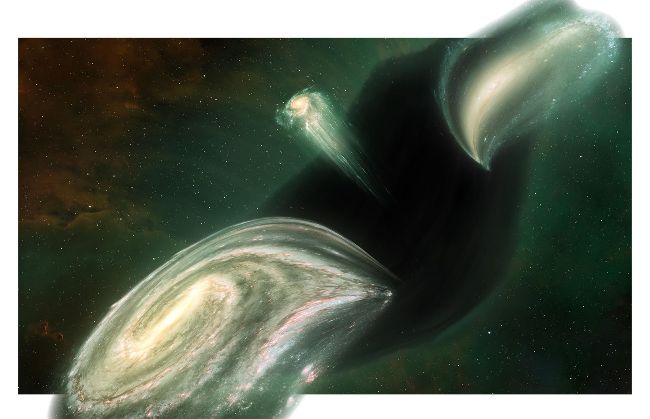WHAT IS THE GREAT ATTRACTOR?
Head for the stars and discover what it is that makes the Great Attractor such a magnetic idea
WORDSSTEVE CHARNOCK
DID YOU KNOW? There are around 100,000 galaxies in the Laniakea Supercluster

© Adobe Stock
Imagine being pulled by an irresistible force towards I something you can’t see. That’s the tantalising mystery at the heart of the Great Attractor, a gravitational anomaly influencing the movement of galaxies across hundreds of millions of light years. Hidden behind the dense plane of the Milky Way, the Great Attractor is one of the most intriguing enigmas that exists in astronomy today. It holds a huge number of vital clues about the universe’s large-scale structure and so many of its unseen forces.
The Great Attractor is not an object in the traditional sense, so it’s crucial not to consider it as such. It makes much more sense to regard it as a region in space – one where gravity exerts a significant pull, hence the ‘attractor’ moniker. It lies approximately 150 to 250 million light years away within the Laniakea Supercluster, of which our Milky Way is a small component. Galaxies, including our own, are racing towards this region at astonishing speeds of over 373 miles per second, which is remarkably quick. However, its exact nature remains elusive due to its position in the so-called ‘Zone of Avoidance’, where the Milky Way’s stars and dust obscure our view of the more distant universe.
The story of the Great Attractor begins in the late 1970s and early 1980s, when astronomers began studying the peculiar motion of galaxies. While galaxies generally follow the universe’s expansion, scientists working in cosmology noticed some stark deviations from this expected movement. The galaxies appeared to be drawn towards a specific region in the southern sky. This head-scratching anomaly became the focus for a dedicated group of astronomical researchers dubbed ‘the Seven Samurai’, who in 1987 were finally able to identify the general direction of this gravitational pull. Using redshift data – the measure of how light stretches as objects move away – they were able to discover and reveal that entire clusters of galaxies were converging towards what we now call the Great Attractor.